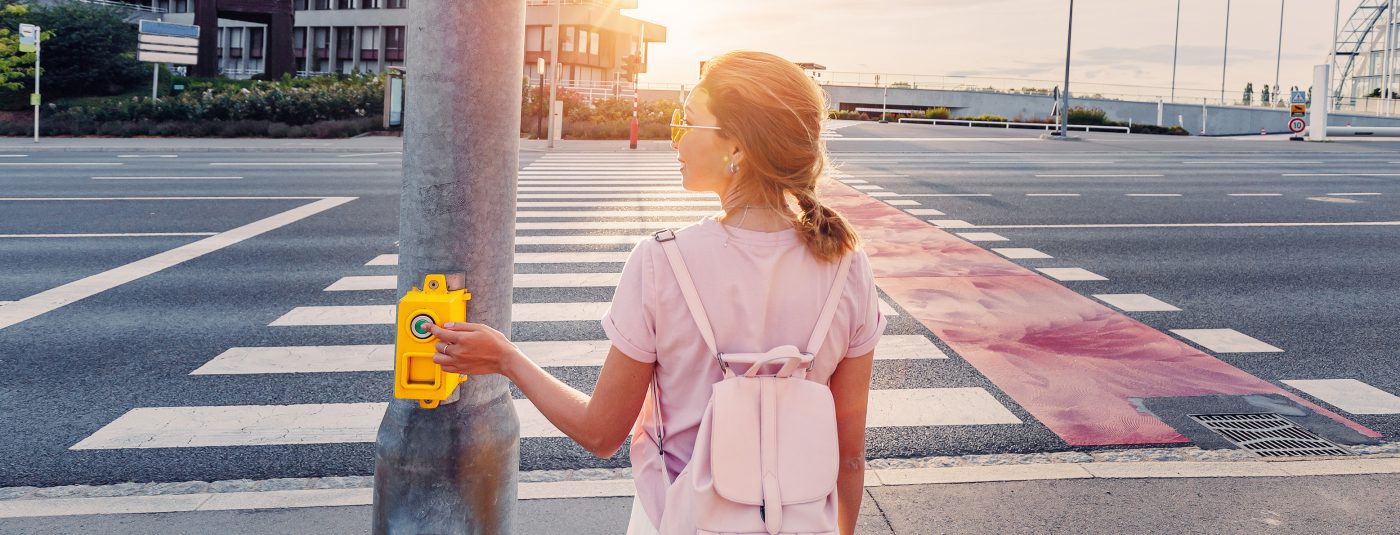Do Crosswalk Buttons Actually Work?

I get asked this question a lot, and the short answer is “it depends.” What it depends on is if pushing the pedestrian button will change the signal timing or not. Let me explain. During rush hour traffic, most signalized intersections have lots of vehicles. The traffic signal is programmed to optimize service, so major streets will be given more green time while minor movements like minor street left turns will be minimized. A pedestrian crossing the street in the same direction that the majority of vehicles are going will likely already have enough time to cross the street, so the signal timing does not need to change for that movement. In this instance, the traffic engineer typically puts in a call for the “walk” signal whether or not the pedestrian button was actually pushed. As a driver, I often look over to the countdown timer to see how much time is left for a pedestrian to cross – most of the time in Utah, when the pedestrian timer hits zero, the light turns yellow (No, that does not permit you to speed up to beat the light!).
The minor movements, however, are different. If the side street is not very busy, the amount of green time could be minimal, as short as a few seconds. A pedestrian crossing at a typical pace of 4ft/sec will get 20ft into the intersection if given only 5 seconds to cross. So here is where the functionality of the pedestrian button comes in to play. If the amount of time the pedestrian needs to cross is greater than the minimum amount of green time given to the vehicles, then pushing the button will lengthen that green time accordingly. The typical adult walks faster than 4ft/sec, so they will cross with plenty of time to spare, but young kids and mature adults, on the other hand, are the limiting factor.
What happens when it is not rush hour traffic?
Pushing the pedestrian button is beneficial when no vehicles are coming, as it registers to the traffic light that a pedestrian wants to cross, so it will change or hold a green light for the needed amount of time to walk across. Often the signal is “resting” on a green light for the major movement, and pushing the button makes sure it doesn’t change while a pedestrian is crossing.
When I am by myself, I wait for green, but I don’t push the pedestrian buttons – even when I know the green time will be short. I understand that pressing the button can lengthen the cycle, but I do not need more time as a faster pedestrian. I sometimes have to pick up the pace and even jog during a yellow light, but I realize that by not pushing the button, the vehicles will get their green light sooner – so when I’m crossing in front of the waiting cars, I say, “You’re welcome.”
For more information on traffic control designs contact Scott Shea in our Transportation Division at (801) 494-9136 or scott.shea@crsengineers.com.

